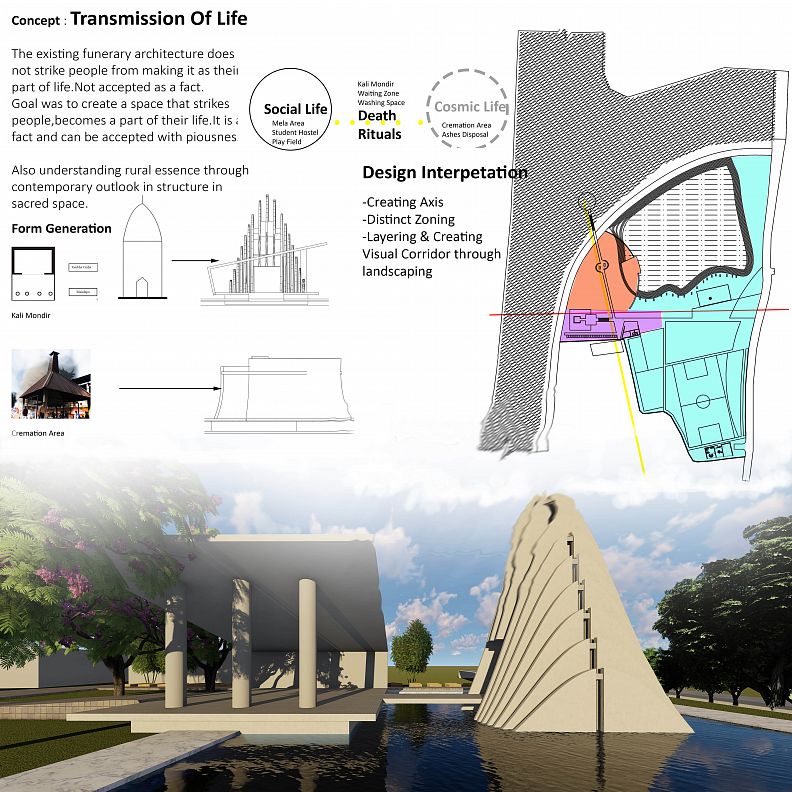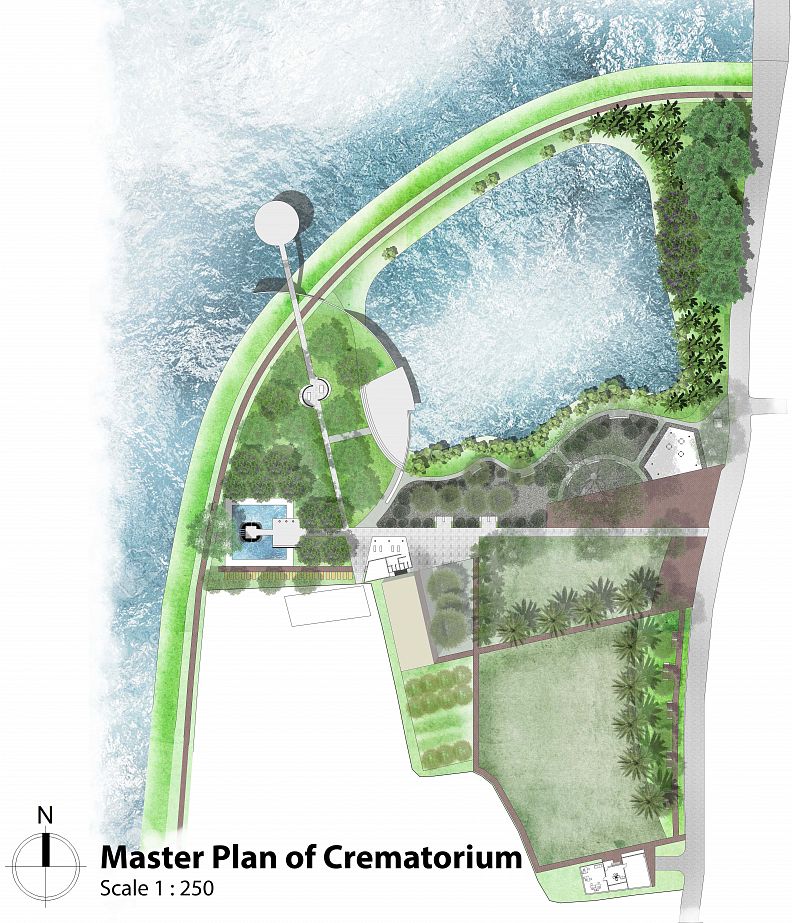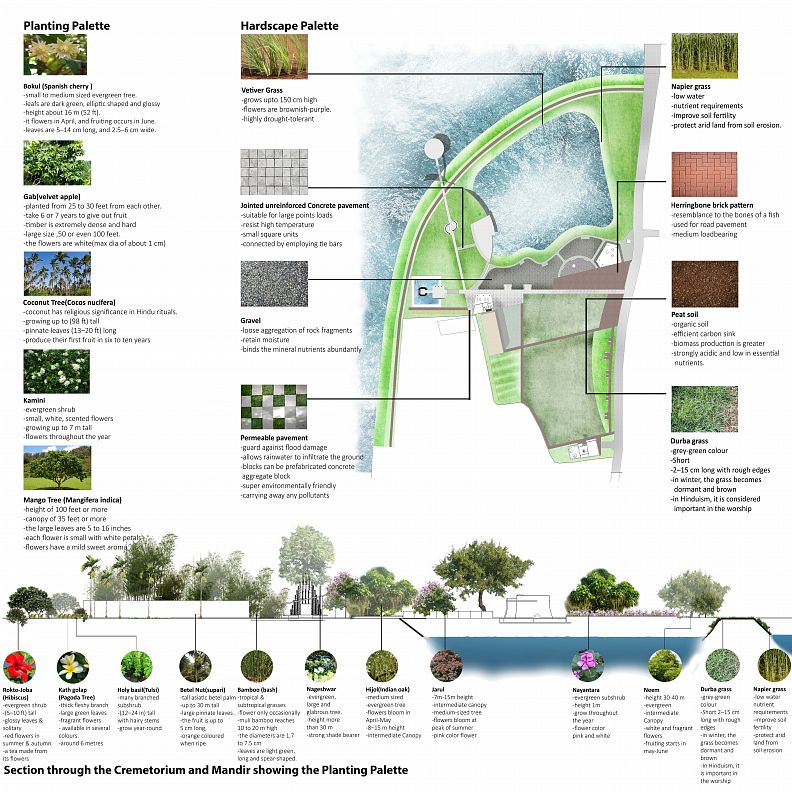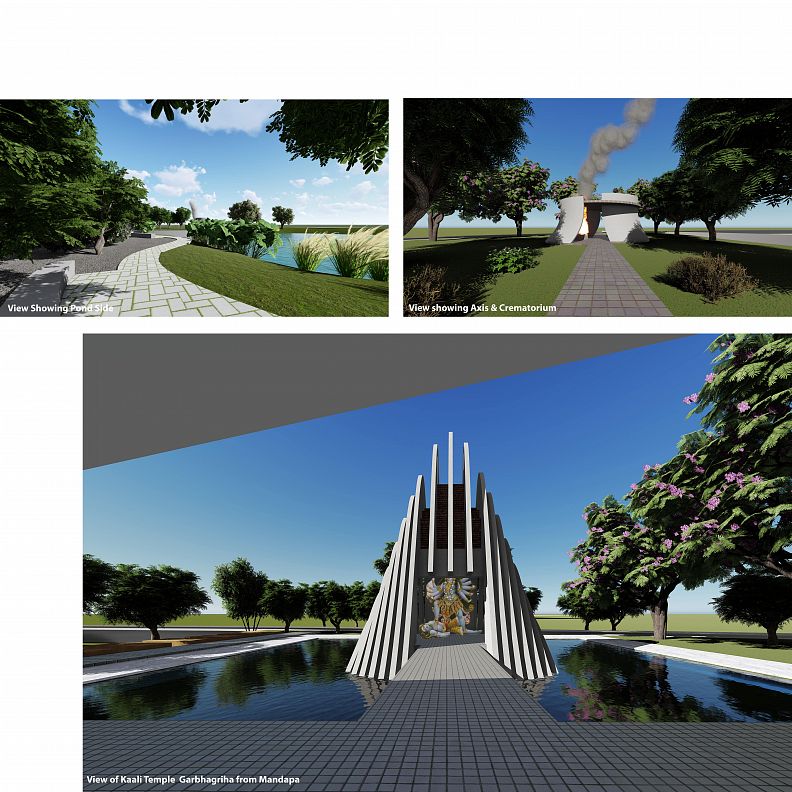Design of a Sacred Space- Crematorium

Project idea
Death & Architecture have a very unique relationship. Cremation culture plays an important role in determining certain things & values in it. As pertaining to Bangladesh, let us consider the three most common religions and their methods of cremation: 1) Hinduism 2) Islam 3) Christianity Their methods of cremation largely varies. Hinduism- most common method is by burning the body on a pile of wooden logs, Islam- The only method followed in Islam is covering the body and burying it into the soil & Christianity- Bodies are covered and placed in coffins after which they are buried into the soil. The concept of Death in Hinduism is broadly divided into 3 sections. i.e. Death as an event, Death as a condition & Death as a state of existence and non-existence. In Hindu Theories, Death is a highly personal event but according to Kastenbaum (2006) death can be thought of or classified into three broad ways.
Crematoriums may be considered as cultural places of death and remembrance as well as technical places of bodily disposal. A place where cultural meanings are reproduced and communicated through architecture, interior design, and landscaping. The existing funerary architecture does not strike people from making it as their part of life. Not accepted as a fact.
The goal was to create a space that strikes people. It becomes a part of their life. It's a fact and can be accepted with piousness. And better understanding rural essence through contemporary outlook in structure in sacred while examining what role architecture & landscape architecture can play in the process of grief & healing.
Project description
Gonesh Pagla Crematorium Complex is situated in a suburban, rural area of Gopalganj, Dhaka beside a beautiful river, Madhumoti. The concept of the project was to interpret the transmission of life. The journey of Social Life to cosmic life is through Death & Rituals part of life which are on purposely created to three distinct zonings with their corresponding functions. Those zones are connected by visual corridors of layers of landscaping while creating two main intersecting axes.
Kaali Mondir’s form is a contemporary interpretation of typical Bengal Temple-Architecture type: Shikhora Temple & cremation place is also given a modern outlook considering environment & sustainability features.
While landscaping, native shrubs, canopy trees are given priority in overall design & materials selection also.
Technical information
The design incorporates the landscape of the site where the rituals of a crematorium and the landscape are integrated. It includes the site plan, section, design of the mandir, and the crematorium where the deceased are cremated. The materials used in the walkway and the open field and green area are mainly concrete, soft permeable pavement, and brick, depending on the requirements. The tree palette used here is climate respected and depends on their suitability and usefulness.






